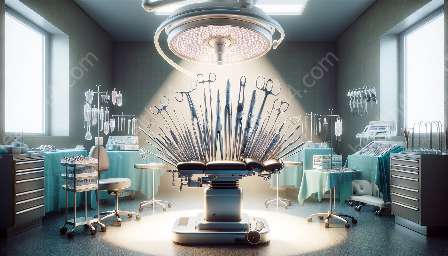Have you ever wondered about the importance of curettes in the world of surgical instruments and medical devices & equipment? Let's delve into this essential tool, exploring its uses, variations, and significance in medical procedures.
What are Curettes?
Curettes are surgical instruments used for scraping, removing, and collecting tissue, debris, or foreign matter from body cavities or surfaces, particularly in medical and dental procedures. They come in various sizes and shapes, each designed for specific purposes and anatomical sites.
The Significance of Curettes in Medical Practices
Curettes play a vital role in numerous medical procedures, including gynecology, dermatology, orthopedics, and dentistry. In gynecology, endometrial curettes are used for diagnosing and treating abnormal uterine bleeding or other uterine conditions. Dental curettes are essential for removing plaque and calculus from teeth during professional dental cleanings, contributing to oral hygiene and preventing periodontal diseases.
Variations of Curettes
Curettes come in an array of variations, each tailored for a specific medical specialty. Some common types include bone curettes used in orthopedic surgeries, dental curettes for periodontal treatments, and uterine curettes for gynecological procedures. Each variation features unique characteristics, such as the shape and size of the working end, ensuring precision and effectiveness in specific medical applications.
Materials and Design
The construction of curettes is crucial for their effectiveness and durability. These instruments are typically made from high-quality stainless steel, offering excellent corrosion resistance and ease of sterilization. The handles are designed ergonomically to provide a comfortable grip and precise control during procedures, enhancing the overall performance of healthcare professionals.
Importance of Quality and Sterilization
Ensuring the quality and cleanliness of curettes is essential to prevent infections and cross-contamination in medical settings. These instruments must undergo stringent sterilization processes to eliminate any potential risks of transmitting infectious agents between patients. From autoclaving to chemical disinfection, healthcare facilities adhere to strict standards to maintain the integrity and safety of surgical instruments, including curettes.
The Future of Curettes and Technological Advancements
As advancements in medical technology continue to unfold, the design and functionality of curettes are also evolving. Innovations such as the integration of ergonomic handles, advanced materials, and precision manufacturing techniques are enhancing the performance and usability of curettes, ultimately improving patient outcomes and the overall efficiency of medical procedures.
Conclusion
Curettes are indispensable tools in the world of surgical instruments and medical devices & equipment. Their versatility, precision, and significance across various medical specialties make them essential for maintaining optimal patient care and treatment outcomes. As healthcare practices and technologies continue to advance, the evolution of curettes will undoubtedly contribute to the continual enhancement of medical procedures and patient care.


